This photo-essay is about those works of art from across the world which celebrate books and their authors.
My Favourite Authors
Most of my favourite authors from my childhood were from my father's collection of Hindi books - Krishen Chander, Nanak Singh, Shivani, Chatur Sen, Rangey Raghav, Asha Purna Devi, Bimal Mitra, Shanker, Muktibodh, and many more. Those were not books meant for children, but that did not stop me from reading them!Growing up, I discovered English books. Then, over the last decades while living in Italy, apart from Italian writers, I have also discovered many Latin American and European writers. Through the images of this photoessay, I hope to make you think about your own favourite authors and books.
The next image in this collection is from the Innocenti building in Florence that hosts the UNICEF office and shows a boy sitting on a paper boat. I think that it wonderfully illustrates the capacity of a good book to transport you to far away lands of imagination. I don't know the artist of this sculpture.
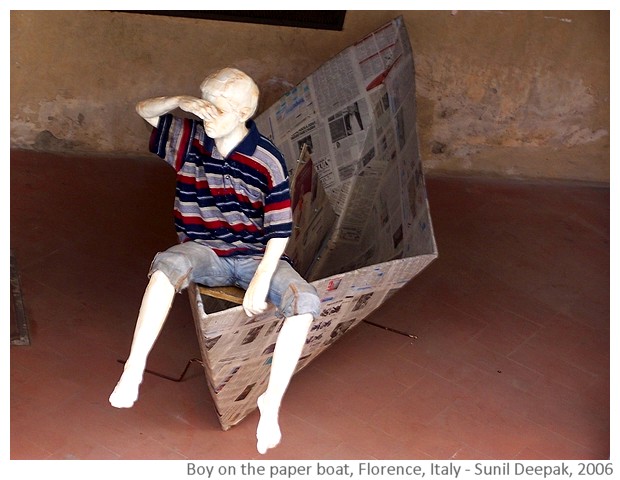
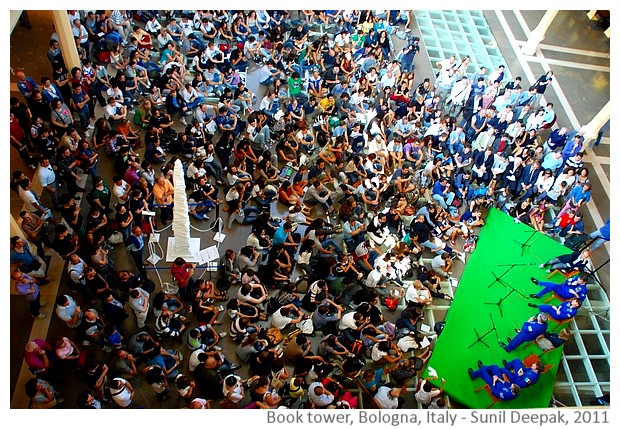
America (USA)
There are two images from the Central Park in New York. The first one has a statue of Robert Burns, also known as Robbie Burns. He is considered to be the national poet of Scotland. According to the Wikipaedia, "He is regarded as a pioneer of the Romantic movement, and after his death he became a great source of inspiration to the founders of both liberalism and socialism, and a cultural icon in Scotland and among the Scottish Diaspora around the world. Celebration of his life and work became almost a national charismatic cult during the 19th and 20th centuries, and his influence has long been strong on Scottish literature".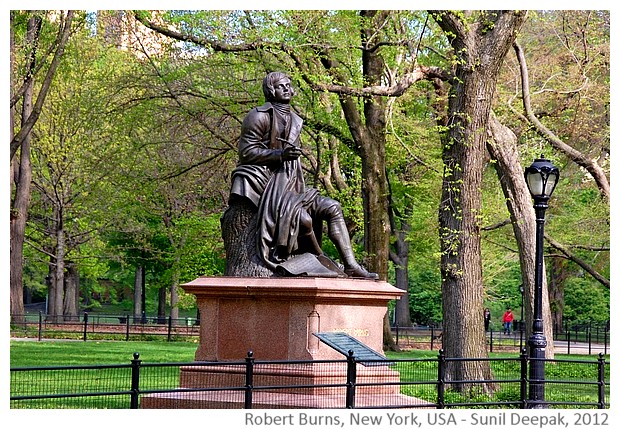
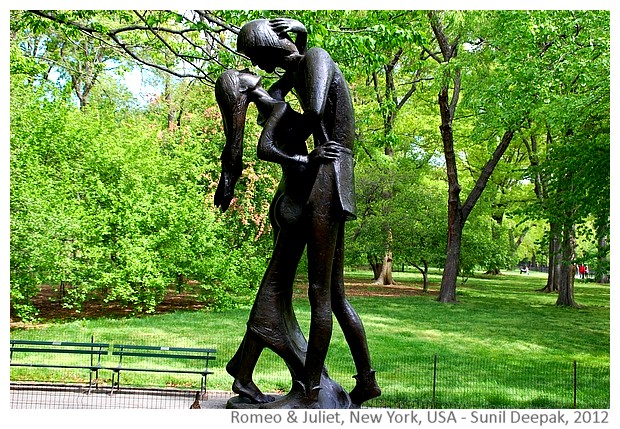
Austria
The next image is from Vienna and shows the writer and playwright Ferdinand Raimund (1790-1836) near the opera building. He is credited with a number of important books and plays in German. I find his story very tragic - bitten by a dog and afraid of a painful death due to rabies, because no treatment existed for this disease at that time, he had committed suicide at the age of 46 years. When I hear people complaining about vaccines and refusing to vaccinate their children, I would like to remind them of this story.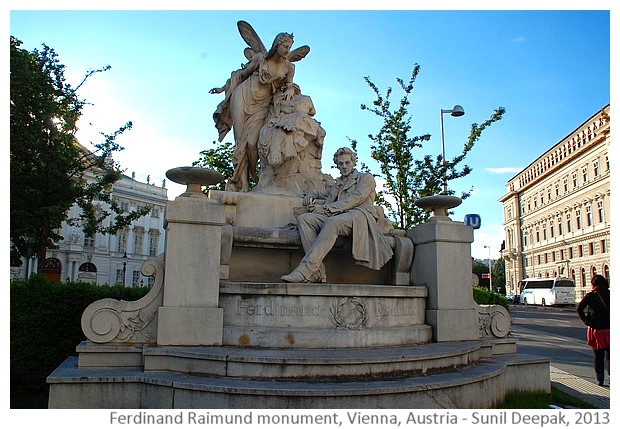
Belgium
The next three images are from Brussels, the capital of Belgium. The first one shows two lovers at the lake - they are Thyl and Nele, the characters of a book by the Belgian writer Charles De Coster. De Coster is considered to be the father of Belgian writing. This monument is the opera of the sculptor Charles Samuel, a fan of De Coster. The monument also has many other characters from De Coster's books on its sides - a cat, a cooking pot, a spinning rod.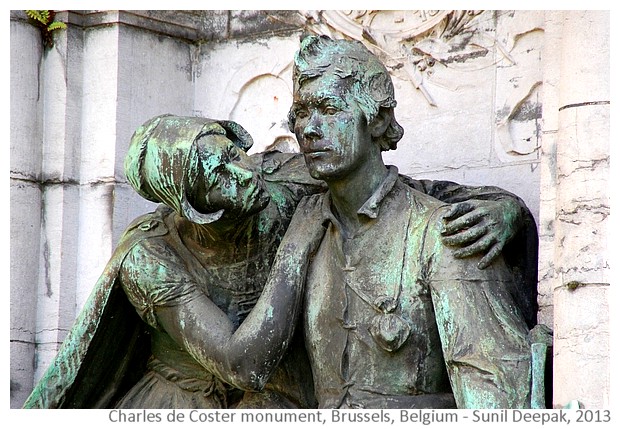
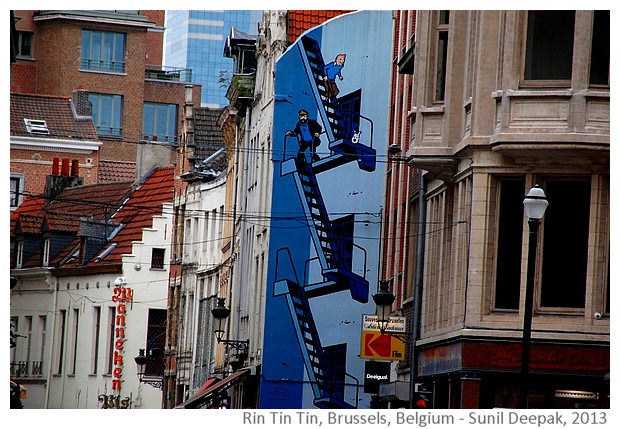
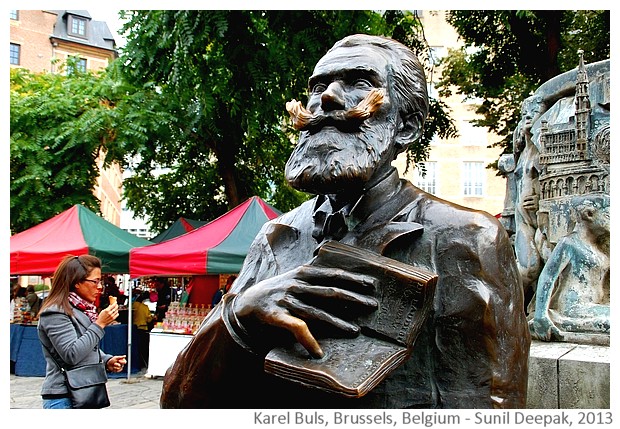
Brazil
The next five images are from Brazil. The first one has the bust of famous Lebanese writer Khalil Gibran in the city of Goiania. He was 12 years old when his family emigrated from Lebanon to USA. He died at 48 years and wrote in both Arabic and English. His most well known book is "The Prophet".Many of the words of Khalil Gibran have been quoted infinite number of times and will be familiar to readers across the world. For example, you must have heard these - "If you love somebody, let them go, for if they return, they were always yours. And if they don't, they never were." Another of his quotes that I like, says - "I have learned silence from the talkative, toleration from the intolerant, and kindness from the unkind; yet, strange, I am ungrateful to those teachers." You can check many other quotes from Gibran at Goodreads.
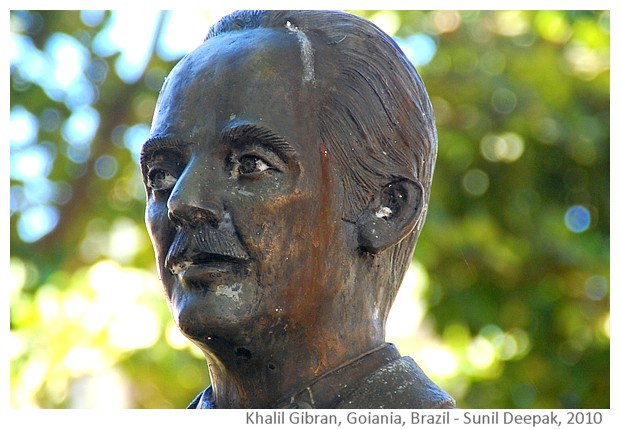
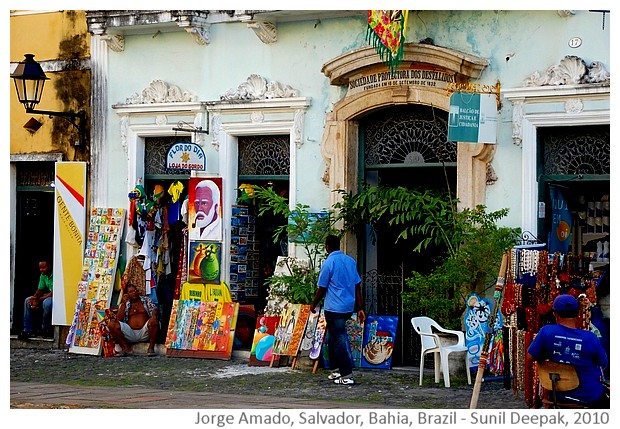
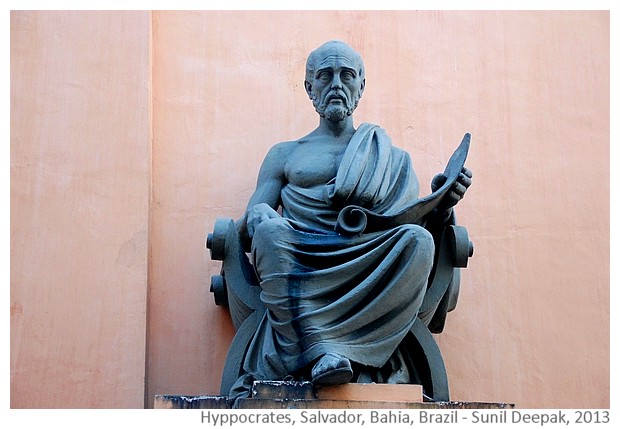
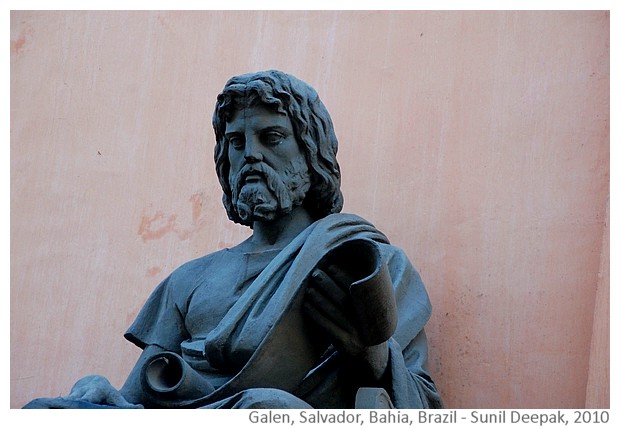
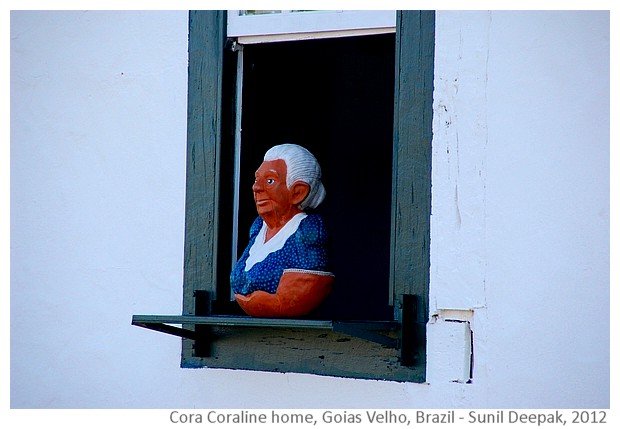
Czech Republic
The next image of this photo-essay is from Prague and shows the statue of a women writer - Bozena Nemcova (real name "Barbora Panklova"). Writer of fairy tales and legends, she is best known for her novel Babicka (Grandmother), an autobiographical book about her childhood with her grandmother.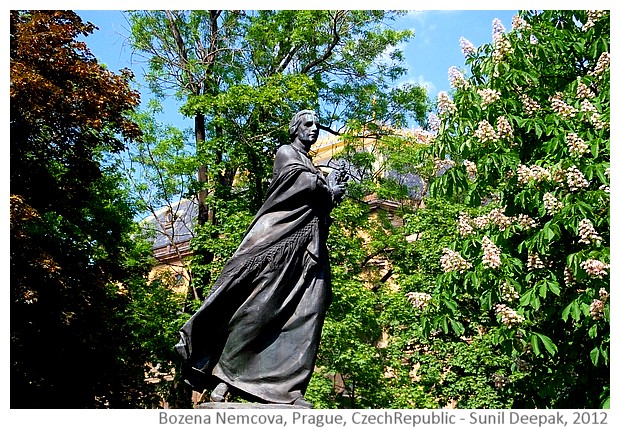
India
The next four images are from India. The first image has the iconic figure of poet-saint Basvanna from Basavkalyan in Karnataka, who is known for his Vachana-sahitya. According to Wikipaedia, "He spread social awareness through his poetry, popularly known as Vachanaas. Basavanna used Ishtalinga, an image of the Śiva Liṅga, to eradicate untouchability, to establish equality among all human beings and as a means to attain spiritual enlightenment. These were rational and progressive social thoughts in the twelfth century."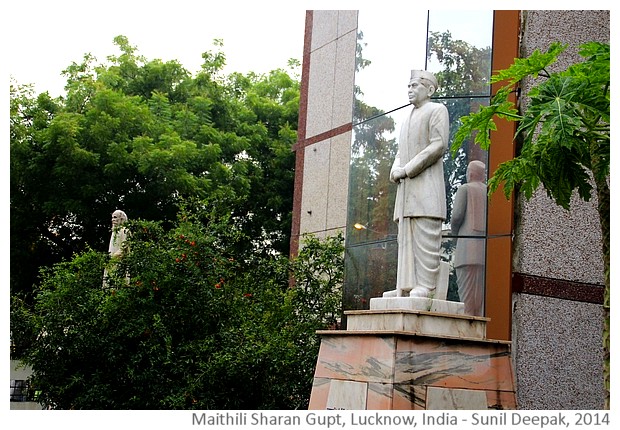
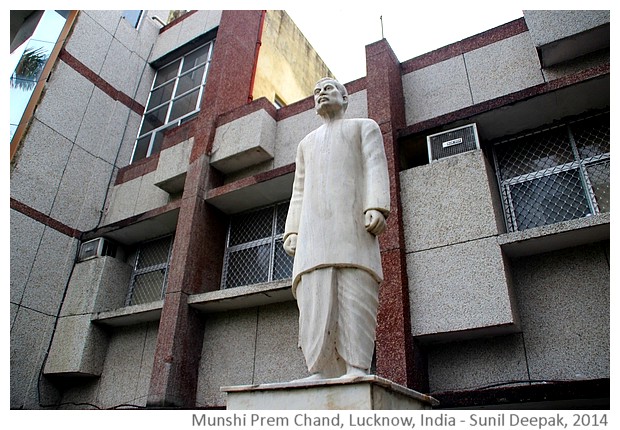
The fourth image from India shows Nobel laureate poet, writer, playwright and freedom fighter, Rabindra Nath Tagore.
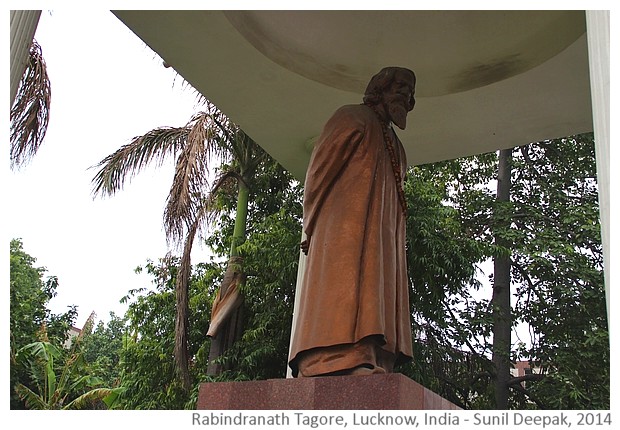
Italy
The images of writers from Italy are more numerous than all the other countries in this photo-essay. This may be because I have travelled widely in Italy. Perhaps, this has also to do with greater willingness in Italy to honour artists and writers in the public spaces.The first three images are from the gardens of Villa Borghese park in Rome. The first image shows the Ukrainian born Russian writer and playwright Nikolai Gogol. In her book "The Namesake", Jhumpa Lahiri had paid homage to Gogol by giving his name to her hero.
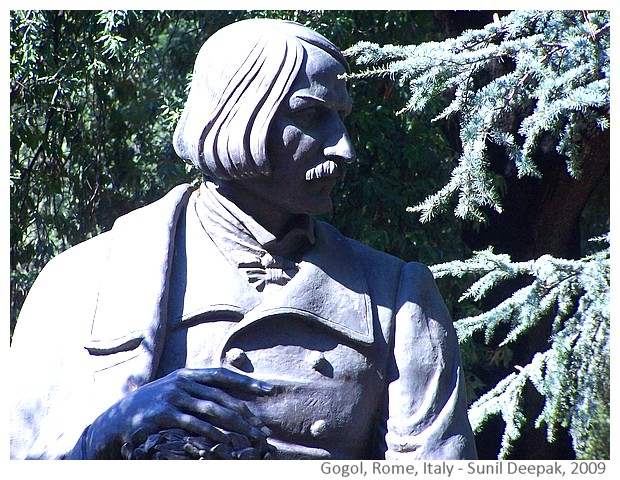
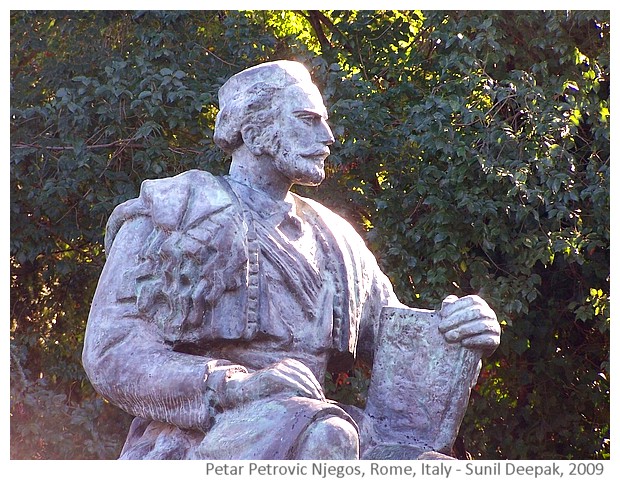
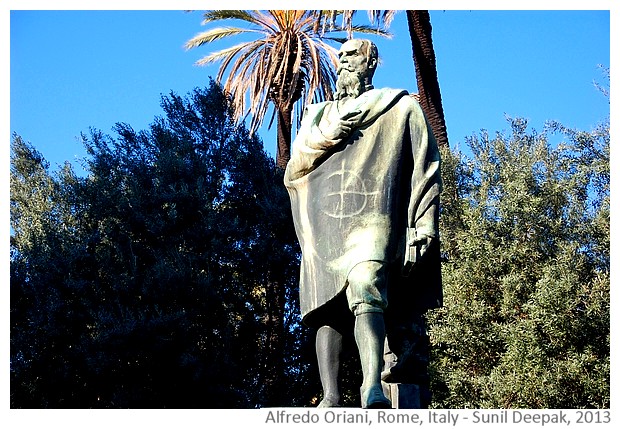
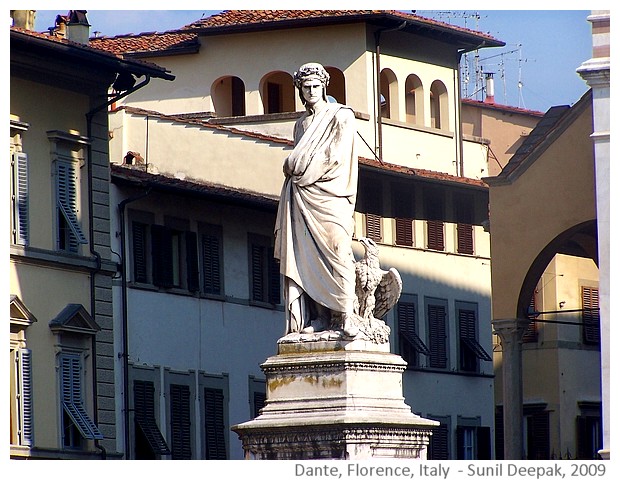
The first of these images shows the well known Italian journalist and newspaper editor Indro Montanelli, writing on his old typewriter. He is shown as a young man, his severe face is focused on his writing. It is a remarkable piece of art.
The next images have 3 Italian writers - Ernesto Teodoro Moneta, Gaetano Negri and the playwrite Giuseppe Giacosa from the Cavour square park in Milan.
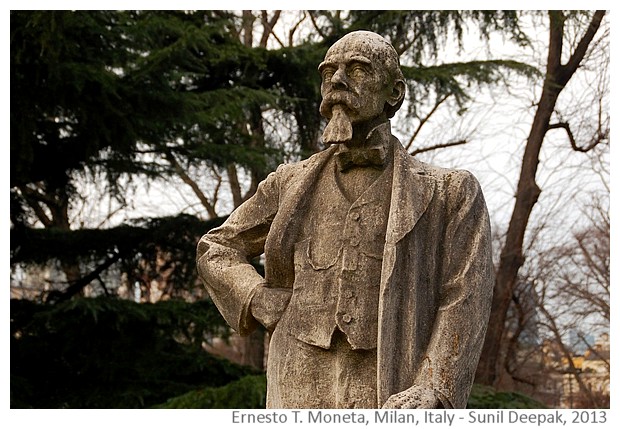
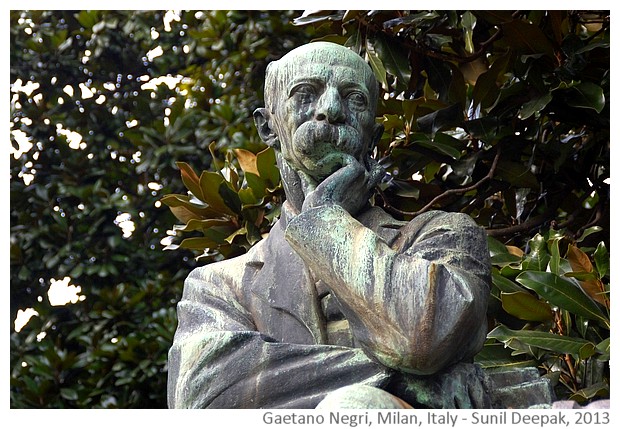
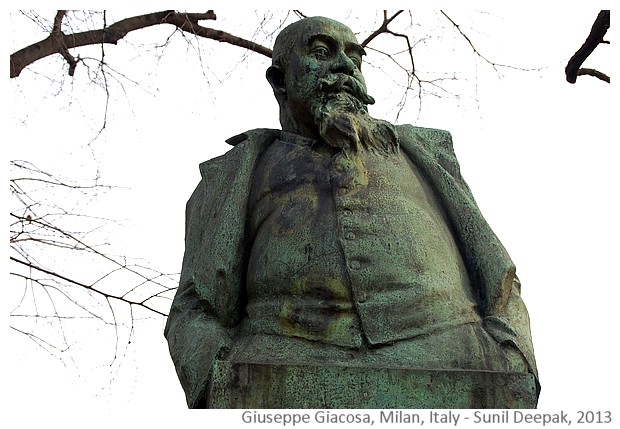
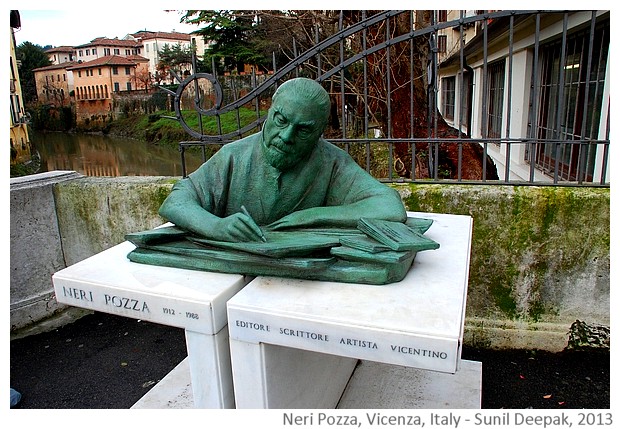
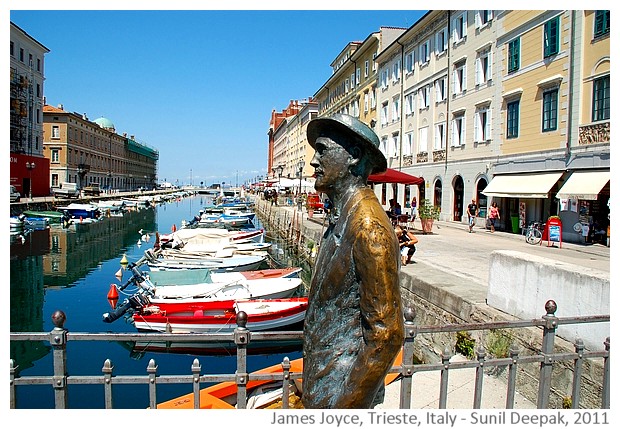
In the End
I have loved putting together this photo-essay, even though identifying the pictures for this post took me hours of going through my vast picture archives. It was frustrating that from many countries, I could not find any image related to a book or a writer or a journalist. For example, I could not find any such image from my image archives of UK or Switzerland. No country of Africa is represented in this photo-essay for the same reason.Many countries do not put statues of writers in prominent public spaces, probably because often writers speak against their governments! Also because compared to national leaders, military persons and freedom fighters, for many countries writers and artists are not considered important enough to be remembered through art and sculpture. Finding images of art related to women writers is even more difficult - for this essay I could find only two of them.
I hope that you will enjoy going through these images and perhaps share with me your experiences of finding the statues of your favourite authors during your travels! I would love to hear about any art works related to writers and/or their books, especially from countries not represented in this post.
***




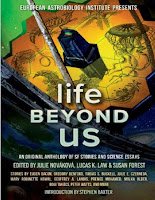





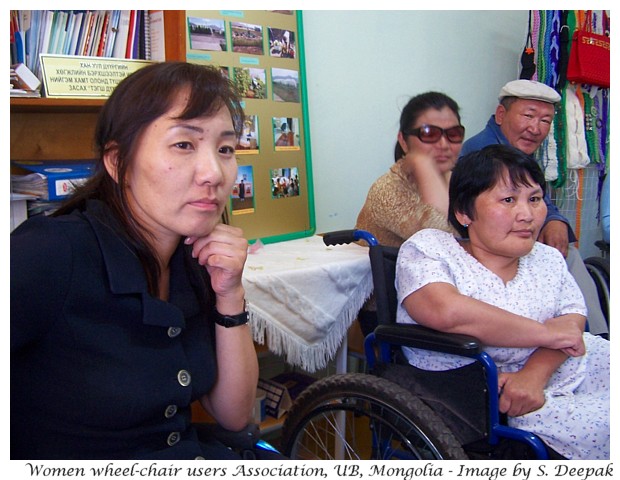

.jpg)




